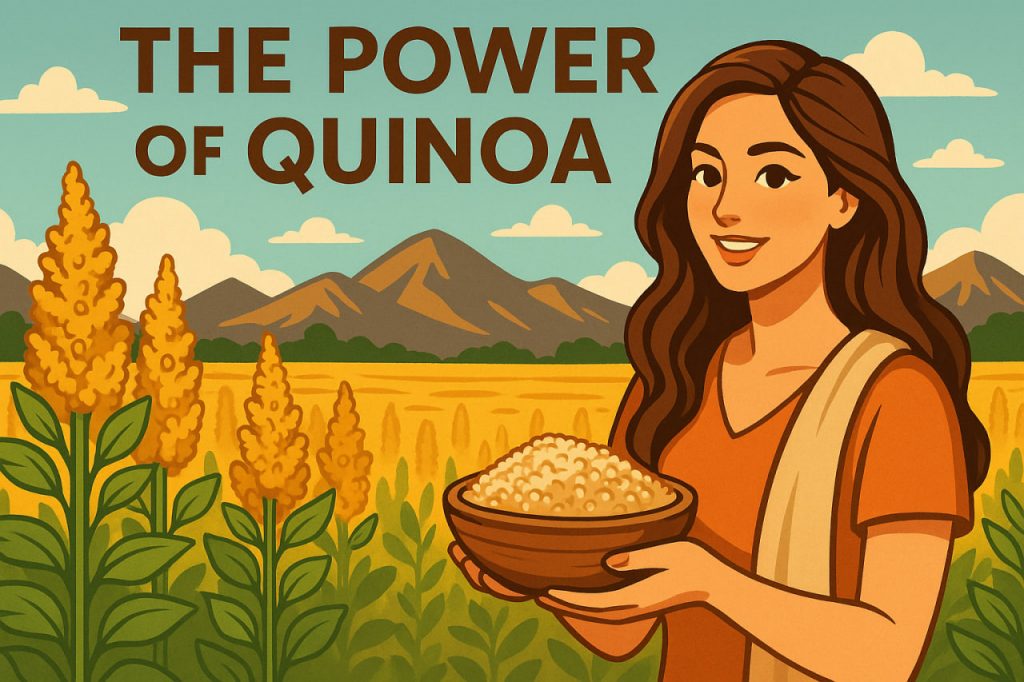Quinoa, often called the “mother grain,” has become one of the most celebrated health foods of the 21st century. However, its story begins thousands of years ago in the Andean mountains of South America, where it was cultivated by ancient civilizations such as the Incas. Revered for its nutritional richness and resilience, quinoa is not a true grain but a seed from the plant Chenopodium quinoa. It has captured global attention for being gluten-free, high in protein, and packed with essential nutrients. Today, quinoa stands at the crossroads of tradition and innovation—uniting ancient agricultural wisdom with modern dietary science.
The Origins and History of Quinoa
Quinoa has been grown for over 5,000 years in regions surrounding Lake Titicaca, located between modern-day Peru and Bolivia. The Incas considered it a sacred crop, referring to it as “chisaya mama,” meaning “the mother of all grains.” Quinoa was central to their diet and religious rituals, symbolizing life and fertility. When Spanish conquistadors arrived in the 16th century, they suppressed its cultivation in favor of European grains like wheat and barley. Fortunately, indigenous farmers preserved quinoa seeds in high mountain areas, ensuring the plant’s survival. In the 20th century, scientists rediscovered quinoa’s exceptional nutritional profile, sparking a global revival of this ancient crop.
Nutritional Powerhouse: Why Quinoa Is a Superfood
Quinoa’s popularity in modern nutrition stems from its extraordinary health benefits. Unlike most plant foods, it is a complete protein, meaning it contains all nine essential amino acids required by the human body. It is also rich in fiber, iron, magnesium, and antioxidants, while being naturally gluten-free. This makes quinoa an excellent choice for vegetarians, vegans, and those with gluten sensitivities. Nutritionist Dr. Alicia Romero explains, “Quinoa is one of the rare plant-based foods that provide balanced nutrition comparable to meat or dairy products—it’s a true gift from nature.” Its low glycemic index also supports stable blood sugar levels, promoting sustained energy and better overall health.
Varieties and Cultivation
There are over 120 known varieties of quinoa, though the most common types are white, red, and black quinoa. Each variety has unique flavors and textures—white quinoa is light and fluffy, red quinoa holds its shape well in salads, and black quinoa has an earthy, nutty taste. The plant thrives in harsh conditions, growing at high altitudes and tolerating both drought and frost. This resilience makes it a valuable crop in the face of climate change. Farmers in Africa, North America, and Asia have begun cultivating quinoa, expanding its global availability while preserving traditional farming methods from the Andes.
The Role of Quinoa in Modern Diets
Quinoa has become a versatile staple in global cuisine, used in everything from breakfast bowls to gourmet dishes. It can replace rice, couscous, or pasta, and is often added to salads, soups, and baked goods. In addition to its nutritional value, quinoa’s mild flavor makes it easy to incorporate into various cultural diets. Its popularity among health-conscious consumers has driven the growth of the global quinoa market, creating new economic opportunities for farmers. However, experts urge sustainable farming and fair trade practices to ensure that indigenous communities in South America continue to benefit from the crop’s success.
Cultural and Environmental Significance
Beyond its nutritional importance, quinoa represents a powerful symbol of sustainability and cultural heritage. The United Nations declared 2013 the International Year of Quinoa, recognizing its potential to promote food security and ecological resilience. The plant requires minimal water and can grow in poor soils, making it ideal for regions facing desertification or food scarcity. For indigenous Andean farmers, quinoa remains more than just a crop—it embodies a way of life rooted in respect for nature and community. Agricultural anthropologist Dr. Jorge Salinas notes, “Quinoa connects ancient traditions with modern sustainability. It teaches us that the future of food may lie in the wisdom of the past.”
Interesting Facts
- Quinoa is technically a pseudocereal, related to spinach and beets rather than wheat.
- NASA has considered quinoa as a potential food source for long-term space missions due to its high nutrient density.
- The tiny seeds can be white, red, purple, or black, depending on the variety.
- The natural coating on quinoa, called saponin, protects it from pests but must be rinsed off before cooking.
- Bolivia and Peru together produce more than 80% of the world’s quinoa supply.
Glossary
- Pseudocereal — A plant that produces seeds used like grains but is not part of the grass family.
- Amino acids — Organic compounds that form the building blocks of proteins.
- Saponin — A bitter-tasting natural compound that deters insects and birds from eating quinoa seeds.
- Glycemic index — A measure of how quickly a food raises blood sugar levels.
- Sustainability — The practice of using resources in a way that maintains ecological balance for future generations.

